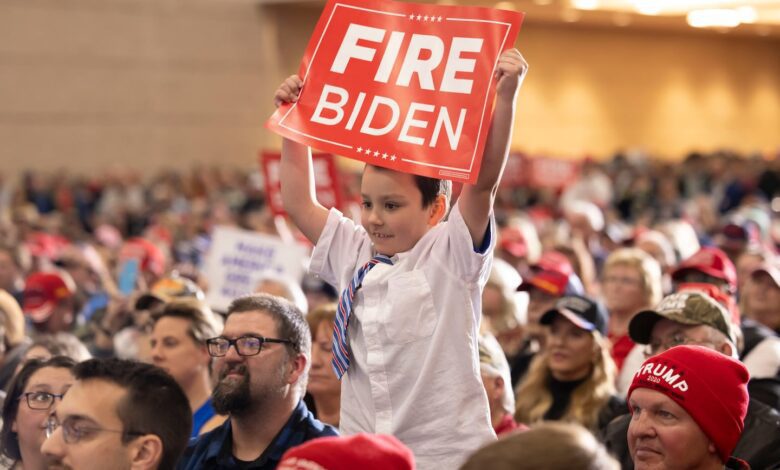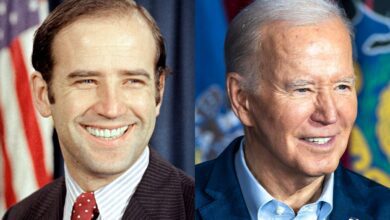
Why the uncertainty about which candidate different age groups support?
In 2020, Joe Biden Voters under 30 won by 24 points, according to the Pew Research Center comparison From opinion polls to voter registers. But in the latest Times of Siena poll, voters under 30 favor Biden by just one point. The close race is a result of older voters — those 65 and older — backing Biden by nine points, despite favoring Trump by four points four years ago.
So what gives? Has there been a major shift over the past four years? Is this a function of a very strange and recurring election?
Maybe and maybe. But part of it may come down to who Siena pollsters think are likely to vote.
Let’s first point out that this is one survey. Various polls have been conducted recently – including the YouGov polls (conducted for… Economic) and Ipsos (conducted for Reuters) – Provide different assessments for these same groups. The YouGov poll, for example, shows Trump leading by one point, but gives Biden a wide advantage among younger voters and Trump a significant advantage among older voters.
Meanwhile, Ipsos poll results show little difference. Slight lead for Biden among registered voters on the younger end of the spectrum; Biden has a slight lead over the older ones.
Ipsos was generous in providing a number of different breakdowns of its results by age, one of which was particularly noteworthy. If we divide the pool of respondents into three groups — under 35, 35 to 54, and 55 and over — we find that the Biden-Trump margin is essentially the same for each. But levels supports For each candidate it increases with increasing age of the group of respondents. Among those under 35, Trump and Biden each get about 30 percent. For those 55 and older, each gets about 40 percent.
The difference comes in the percentage of each group saying they would vote for a different candidate, or more often, not vote at all. Within the younger group, a fifth said they would not vote for Biden or Trump. Within the older group, only 7% do.
Writing for 538 last week, University of Pennsylvania political scientist Dan Hopkins pointed to The research was included in a recent Associated Press survey conducted by NORC. This poll found that support for Trump and Biden varies widely depending on how many times participants voted in the last election. Among those who did not vote in any of the last three federal elections — 2018, 2020 and 2022 — Trump led by 18 points. Among those who voted on all three ballots, Biden led by 11 points.
This pattern persisted among black and white respondents as well, with only Hispanic voters diverging in favor of Biden.
This is a good point where we can see that many of these characteristics overlap. Younger Americans are more likely to be Asian, Black, or Hispanic than older Americans. Young people are also more likely to be politically independent, a group that votes less often and follows political news more closely.
For example, the divide between politically active and politically inactive young people may be one reason why recent Pew Research Center data looking at voter registration still shows a Broad democratic advantage Among young people while Gallup, consider what you self-reported identificationbe seen One shrinks. Which group best represents voters in November?
The Times-Siena results include overall results and results among voters most likely to cast a ballot. They found no significant difference between the two groups by age; The margins among likely voters changed by only one or two points. But it also depends on how pollsters determine who is likely to vote. The importance of how pollsters view voters became clear in a useful experiment in 2016 – By The Times Different pollsters provide different estimates of the presidential vote using the same set of responses.
It’s early. It’s a strange election. There’s a lot of hostility toward Biden on the left, especially among them Loosely tied To the Democratic Party. This may make it unusually difficult to know which younger voters who are unlikely to vote will not do so, and which ones may reluctantly (or even eventually enthusiastically) commit to one candidate or another. Different pollsters will reach different conclusions about who can vote, and results within age groups will vary accordingly. In each of the polls presented in this article, it should be noted that the contest between Biden and Trump is within the margin of error.
I might as well end with a reminder: ballot boxes It will remain close until Election DaySmall fluctuations may tell us less than we think. At the same time, large fluctuations are likely to be smaller than expected.
The Times-Siena poll also sparked some discussion about generational divisions in support for Trump and Biden. From the data shared by Ipsos, we offer this chart as a point for discussion and debate – and do not offer any other insights than those above.



